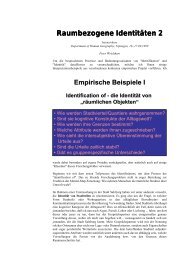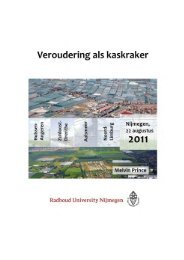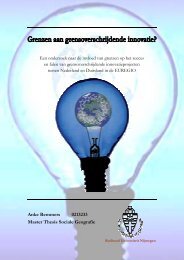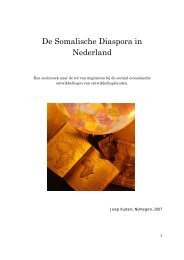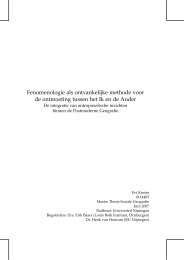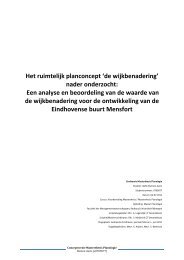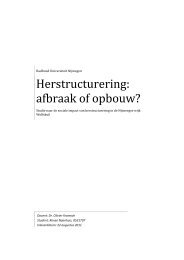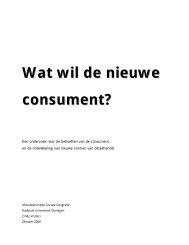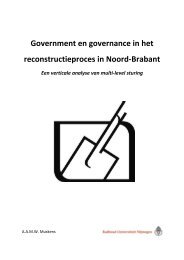Trading with the enemy in Mitrovica, Kosovo. - RUhosting
Trading with the enemy in Mitrovica, Kosovo. - RUhosting
Trading with the enemy in Mitrovica, Kosovo. - RUhosting
Create successful ePaper yourself
Turn your PDF publications into a flip-book with our unique Google optimized e-Paper software.
Conditions have improved and <strong>the</strong> death toll reduced, but <strong>the</strong> traditions changed slower. In <strong>the</strong> 1950's <strong>the</strong><br />
Serbian birth rate was almost <strong>the</strong> same as that of <strong>the</strong> Albanian population (41 per 1000 vs. 46 per 1000). But<br />
Serbs urbanised faster than Albanians and people liv<strong>in</strong>g <strong>in</strong> cities generally have a lot less children than<br />
people liv<strong>in</strong>g <strong>in</strong> rural areas. Also, Serbia had <strong>the</strong> highest abortion rate of entire Europe, 10 times as high as<br />
<strong>Kosovo</strong>'s abortion rate, which shows that some differences <strong>in</strong> culture had started to exist regard<strong>in</strong>g attitude to<br />
abortion between Albanians and Serbs which started to reflect <strong>in</strong> <strong>the</strong> demography. In short, <strong>in</strong> <strong>the</strong> 1950's <strong>the</strong><br />
birth-rate of both Albanians and Serbs was among <strong>the</strong> highest of Europe, but <strong>the</strong> Serbian birth-rate has<br />
become very low due to urbanisation and higher abortion rates while <strong>the</strong> Albanian birth-rate has stayed<br />
almost <strong>the</strong> same. This lead to an proportional <strong>in</strong>crease of Albanians <strong>in</strong> <strong>Kosovo</strong> (Malcolm, 2002).<br />
All <strong>the</strong>se previously described factors would mount up to a turbulent 1980s <strong>in</strong> <strong>Kosovo</strong>. The chang<strong>in</strong>g<br />
demography, <strong>the</strong> shift of more and more important positions to Albanians, <strong>the</strong> expansion of higher education<br />
among Albanians, <strong>the</strong> feel<strong>in</strong>g of Serbs that <strong>the</strong>y were be<strong>in</strong>g pushed out of <strong>Kosovo</strong> would all come toge<strong>the</strong>r<br />
after Yugoslavia's president Tito's death <strong>in</strong> early 1980. March 1981 can be seen as a start<strong>in</strong>g po<strong>in</strong>t of this, as<br />
it saw a cha<strong>in</strong> of Albanian protests. Most of <strong>the</strong>se protests started out of general frustration over liv<strong>in</strong>g<br />
conditions but quickly became more political, even separatist. The authorities were alarmed and responded<br />
harshly, result<strong>in</strong>g <strong>in</strong> at least 9 people dead and over 4000 arrested and sentenced. The authorities of both<br />
<strong>Kosovo</strong> and Serbia blamed <strong>the</strong> events on 'counter-revolutionaries'. Tihomir Vlaškalić, a member of <strong>the</strong><br />
Serbian Central Committee po<strong>in</strong>ted to <strong>the</strong> long-term mismanagement of <strong>Kosovo</strong>'s economy as <strong>the</strong> root cause<br />
of <strong>the</strong> problem. Sadly, he was ignored, despite all evidence be<strong>in</strong>g <strong>in</strong> favour of his argument. <strong>Kosovo</strong> had<br />
become 5 times as poor as Slovenia, and <strong>the</strong> unemployment level <strong>in</strong> <strong>Kosovo</strong> was <strong>the</strong> highest <strong>in</strong> <strong>the</strong> entire<br />
country. In this environment were jobs were scarce <strong>the</strong> still endur<strong>in</strong>g ethnic-imbalance <strong>in</strong> jobs <strong>in</strong> favour of<br />
Serbs and Montenegr<strong>in</strong>s may have been extra frustrat<strong>in</strong>g for Albanians (Malcolm, 2002). Even though <strong>the</strong>se<br />
protests were bad enough to beg<strong>in</strong> <strong>with</strong>, Malcolm (2002) argues that an even more damag<strong>in</strong>g process was<br />
start<strong>in</strong>g to take place <strong>in</strong> <strong>in</strong>ter-ethnic relations:<br />
“But <strong>the</strong> most damag<strong>in</strong>g effect of <strong>the</strong> political reaction <strong>in</strong> 1981 was <strong>the</strong> way <strong>in</strong> which it unleashed a new<br />
round of accusations and counter accusations about Albanian and Serbian nationalism. The question of <strong>the</strong><br />
'flight' of Serbs and Montenegr<strong>in</strong>s from <strong>Kosovo</strong> was raised publicly;..” “What might be called <strong>the</strong> culture<br />
war was now <strong>in</strong> full sw<strong>in</strong>g”<br />
Both <strong>the</strong> Serbian media and <strong>in</strong>tellectuals got caught up <strong>in</strong> this and both were keen on present<strong>in</strong>g <strong>Kosovo</strong><br />
Serbs as victims of Albanian aggression. One popular <strong>the</strong>me of <strong>the</strong> Serbian media was, for example, <strong>the</strong> mass<br />
scale rape of Serbian women by Albanian men. However, an <strong>in</strong>dependent team of Serbian lawyers and<br />
human rights experts found <strong>in</strong> 1990 that <strong>the</strong> occurrence of rape or attempted rape <strong>in</strong> <strong>the</strong> 1980s was much<br />
lower <strong>in</strong> <strong>Kosovo</strong> than <strong>in</strong> Central Serbia - <strong>in</strong> fact <strong>the</strong> lowest of entire Yugoslavia - and that <strong>in</strong> <strong>the</strong> great<br />
majority of cases <strong>the</strong> assailant and victim were of <strong>the</strong> same ethnicity (Oberschall, 2000). These facts did not<br />
32



